Unveiling the Tricks of of Negative Beliefs
In the intricate tapestry of the human mind, beliefs act as both architects and sculptors, shaping the narrative of our lives. Some beliefs, akin to benevolent artists, create expansive landscapes of positivity, while negative beliefs, the stealthy architects of darkness, craft intricate mazes that hinder our journey to self-discovery and fulfillment. Today, let’s embark on a journey of understanding as we explore the nuances of negative beliefs and the clever tricks they employ.
Positive vs. Negative Beliefs: A Dance of Expansion and Contraction
Beliefs, at their core, can be categorized into two opposing forces: positive and negative. Positive beliefs act as catalysts for growth and expansion, instilling confidence and a sense of purpose. Conversely, negative beliefs, often sneaky in their arrival, induce a sense of contraction. They seep into our consciousness, creating self-imposed limitations that significantly impact self-esteem and overall life satisfaction.
Allow me to share a personal example. After years of traveling in Europe, I find myself without a permanent home, currently residing at my parents’ house. The belief hindering me from exploring other options is that it’s challenging to find a home for someone desiring an alternative and simple life. This belief attempts to dissuade me from even considering alternatives, whispering that it’s a futile endeavor due to excessive competition and limited opportunities in the Netherlands.
While these alternative life options might not be apparent to those with a negative mindset, a positive vibrational state opens doors to opportunities. A positive state aligns with positive beliefs, manifesting real-life opportunities. For the creative, imaginative, and joyful souls, numerous possibilities exist. Your physical reality mirrors your state of being and chosen beliefs – it’s like looking into a mirror. If you want to see a smile, you must smile first.
Addressing Limiting Beliefs: The Pivotal Aspect of Personal Development
Let’s delve into common limiting beliefs, exploring their insidious manifestations in our lives.
The Limiting Beliefs Landscape:
- I’m not good enough: A pervasive belief leading to self-sabotage and fear of new challenges.
- I don’t deserve success: A self-imposed glass ceiling rooted in feelings of unworthiness.
- I’m a failure: Resulting from past setbacks, hindering the pursuit of new opportunities.
- I’m not lovable: Interferes with forming and maintaining healthy relationships due to fear of rejection.
- Change is too difficult: Hinders personal growth, resistance to stepping out of comfort zones.
- I must please everyone: Chronic people-pleasing at the expense of personal needs and desires.
- I’m destined to suffer: Pessimistic outlook on life, reluctance to pursue happiness.
- Money is the root of all evil: Creates a negative association with wealth, hindering financial success.
- I’m too old/young: Age-related beliefs affecting the pursuit of certain goals or dreams.
- I can’t trust others: Fear of betrayal or rejection, difficulty forming meaningful connections.
Scarcity Mindset: Breeding Ground for Limiting Beliefs
Many limiting beliefs find their roots in a mindset of scarcity or lack. This scarcity mindset can manifest in different ways, contributing to a range of limiting beliefs.
- Scarcity of Resources: Belief in a lack of time, money, opportunities, or support leads to procrastination or fear of challenges.
- Scarcity of Love and Approval: Constant need for validation results in people-pleasing or staying in unhealthy relationships.
- Scarcity of Opportunities: Fear of failure or reluctance to take risks in pursuing goals due to the belief that opportunities are scarce.
- Scarcity of Abilities: Feeling lacking in necessary skills or abilities leads to reluctance to pursue growth.
- Scarcity of Worthiness: Fundamental belief in one’s lack of worthiness, often underlying the “I am not good enough” belief.
The Tricks of Negative Beliefs
Negative beliefs, akin to skilled illusionists, don’t merely exist; they perform a symphony of self-sabotage, utilizing various tricks to perpetuate themselves and their influence. Recognizing these tricks is crucial for breaking free from their grip. Let’s examine some of these tricks:
1. Survival Instinct
In this scenario, the negative belief convinces the individual that challenging or changing the belief would pose a severe threat to their well-being, triggering the survival instinct.
Example: Negative Belief – “I’m not capable of success.”
Negative Belief Perspective: “I’ve always struggled, and I’m not capable of handling a higher position.”
Survival Instinct in Action: The person declines the opportunity, fearing that challenging the belief will lead to failure, unemployment, and an overall loss of security. The negative belief maintains its influence by creating a perceived lack of alternatives and trapping the person in their comfort zone.
Breaking free from this trick involves recognizing the false sense of urgency created by the negative belief and consciously exploring alternative, more empowering paths for personal and professional growth.
2. Rationalization
Rationalization involves cloaking irrational beliefs in a veneer of reason, convincing us that our self-limiting thoughts are grounded in sound judgment.
Example: Negative Belief – “I’m not good enough to pursue my dream career.”
Rationalization: “I don’t have the necessary qualifications, and the competition is fierce. It’s more practical to stay in my current job, where I am at least secure. Pursuing my dream career is too risky, and realistically, it’s not a viable option.”
In this example, the negative belief is that the person is not good enough. The rationalization provides seemingly logical reasons for not pursuing the dream career, masking the underlying self-doubt and fear associated with the negative belief.
3. Justification
Justification involves providing acceptable reasons or excuses for one’s actions or beliefs. It is an attempt to defend or explain behavior in a way that makes it seem morally or ethically right, even if it may not be.
Example: Negative Belief – “I’m destined to suffer.”
Justification: “Life has always been tough for me, and I’ve faced numerous challenges. It’s just my fate to endure hardship. If I try to pursue happiness, something bad is bound to happen. It’s better to accept my fate and not expect too much.”
In this case, the negative belief is that the person is destined to suffer. The justification provides a moral or fatalistic reasoning, making it appear as if accepting suffering is the right path. This justification reinforces the negative belief and discourages the individual from challenging or changing their perspective.
4. Projection
Projection is a defense mechanism where individuals attribute their own undesirable thoughts, feelings, or traits to others. In the context of negative beliefs, projection involves attributing one’s own insecurities, fears, or shortcomings to those around them, creating a distorted perception of external judgments.
Example: Negative Belief – “I’m not lovable.”
Projection: The individual, feeling unlovable, projects this belief onto others by perceiving that others don’t find them lovable or are likely to reject them. They might interpret neutral or positive actions from others as signs of impending rejection, projecting their own fears onto external relationships.
5. Paranoia
Paranoia involves planting seeds of paranoia to create doubt in external support and guidance.
Example: Negative Belief – “You can’t trust others.”
The individual believes that everyone around them has hidden motives or is secretly judging them. Any positive feedback or encouragement is perceived as insincere, and the person becomes convinced that others are pretending to support them while secretly planning to betray or criticize them.
6. Rejection of Ideas
The rejection of ideas occurs when a negative belief dismisses or undermines positive thoughts, suggestions, or alternative perspectives that contradict the belief.
Example: Negative Belief – “I’m destined to suffer.”
Rejection of Ideas: The person encounters positive advice from friends suggesting that they explore new hobbies or seek professional help to improve their well-being. The negative belief rejects these ideas, convincing the person that any attempt to alleviate suffering is futile, and they are destined to endure a life of hardship.
7. Reward
The concept of reward in the context of negative beliefs involves associating perceived positive outcomes with adherence to the negative belief. This reward mechanism reinforces the belief by convincing the individual that there are benefits or a sense of safety in maintaining the negative perspective.
Example: Negative Belief – “I’m not lovable.”
Reward: The negative belief associates a sense of comfort or familiarity with the belief. It convinces the person that by avoiding situations that may challenge the belief, such as forming new relationships, they maintain a perceived sense of control and avoid potential rejection.
Negative Belief Perspective: “I’m better off not seeking love; it protects me from potential rejection.”
Reward in Action: The person avoids forming new connections, convincing themselves that maintaining the belief shields them from the potential pain of rejection. The negative belief rewards this behavior by providing a false sense of security and control.
Breaking free from this trick involves recognizing the illusory rewards associated with the negative belief and consciously challenging the belief’s ability to provide genuine benefits. It requires exploring alternative perspectives and actions that contribute to personal growth and fulfillment, even if they initially seem challenging or unfamiliar.
Breaking Free: The Path to Empowerment
By shedding light on these cunning tricks, we empower ourselves to break free from the clutches of negative beliefs. Recognizing and challenging these mechanisms pave the way for a mindset shift, leading to personal growth and a renewed sense of self-worth.
In my counseling work, various techniques prove effective in helping individuals identify and reframe these beliefs, replacing them with more positive and empowering thoughts. Encouraging self-reflection, building self-awareness, and promoting self-love are essential components of this transformative process.
Always remember that you have the option to choose what you wish to believe. Choosing a negative belief is a valid option for your life. It does not make you wrong or bad. However, it will limit your joy if you choose to believe these lies which are not true. And it will work hard to convince you that you don’t have another choice.
Don’t let the limiting belief tell you your story in life. You are the creator of your story. You always have a choice in what you believe and what story you wish to tell. Life is like a fully stocked kitchen. There are many ingredients on the shelf you could use. There are many options. However, you don’t have to put all of it in your soup. The same thing counts for the limiting belief. It will always be a valid option for you to choose. You don’t have to kill it. Just let it be on the shelf. And you will see that if you don’t attack this belief but just love it for presenting you with an option, it will not bother you any longer. You simply choose a positive outlook and belief. Like a reverse paranoid, say from now on: THE UNIVERSE IS OUT TO DO ME GOOD!
Beliefs, both positive and negative, weave the fabric of our reality. In understanding their nature and the tricks negative beliefs employ, we embark on a journey toward self-discovery and empowerment. By challenging limiting beliefs and embracing a mindset of abundance, we unravel the maze of self-sabotage, paving the way for a brighter, more fulfilling existence.
I wish you fun on this journey! And let me know in the comments about your adventure with dealing with negative beliefs. Real-life examples are always the best!
About the author

Hey, I’m Joris!
I’m a spiritual counselor on a mission to understand what it truly means to live a happy, joyful life. I explore all sorts of topics I am curious about within spirituality and lifestyle, and share what I learn along the way. I hope you feel inspired and empowered here to live your happiest, most vibrant life!





